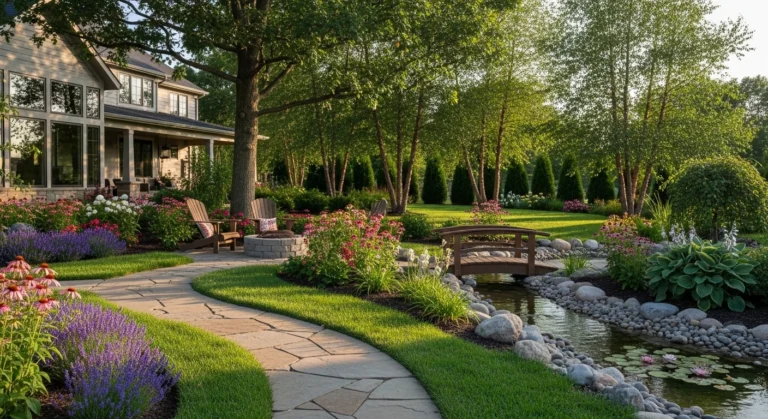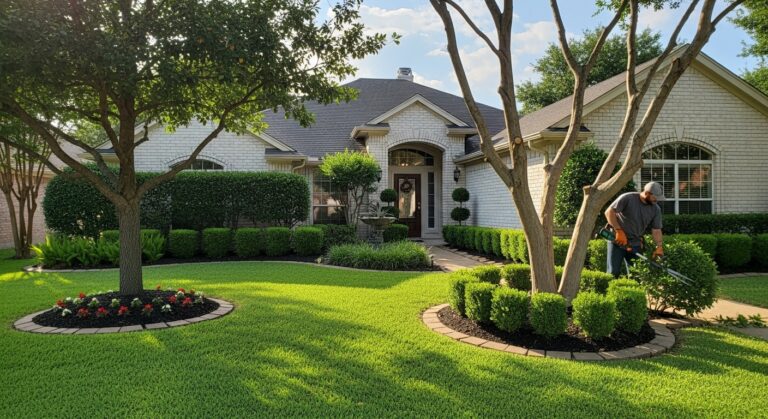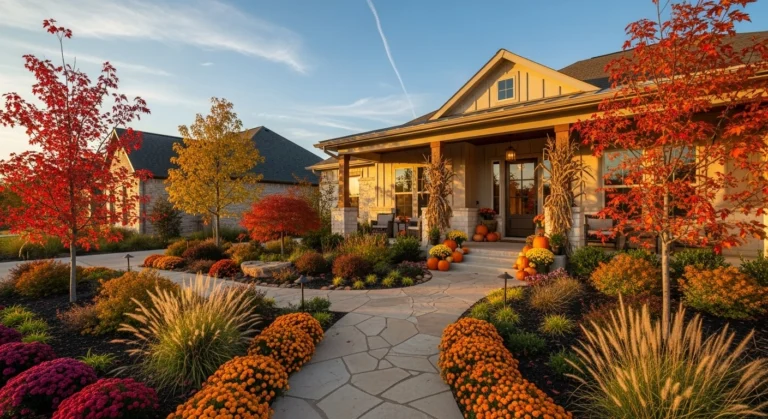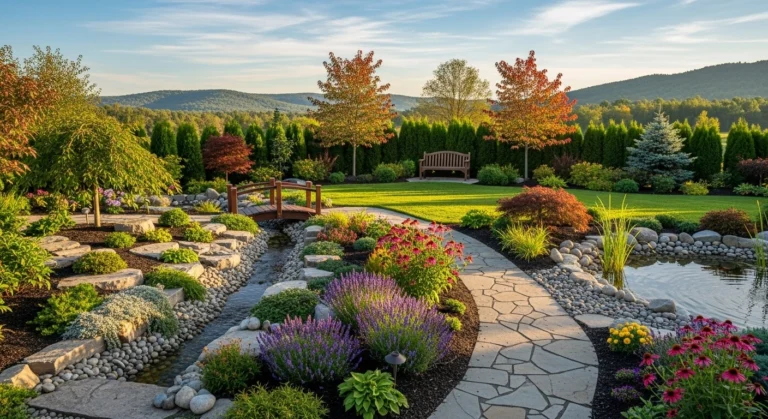The Great Plant Debate: Why Central Texas Natives Win
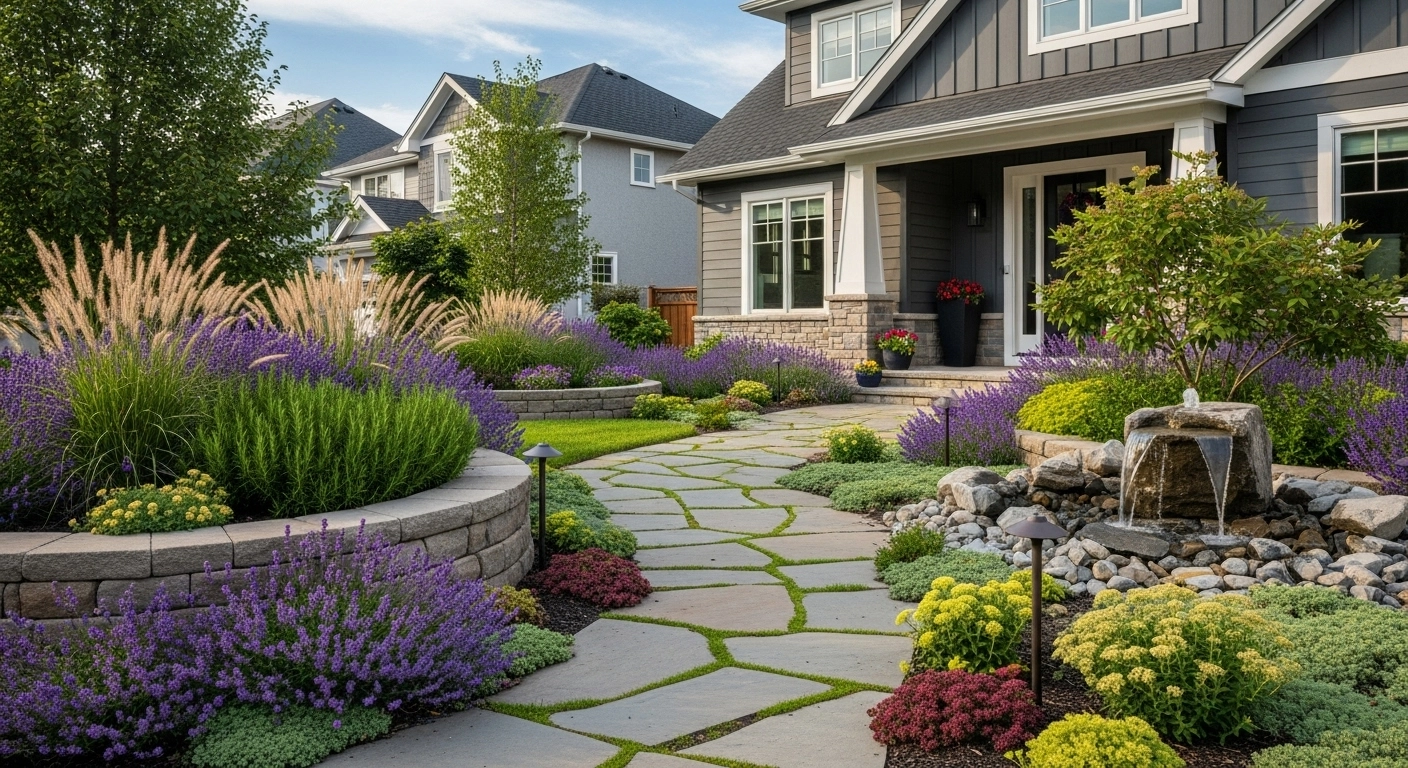
You’ve spent another weekend battling your landscape, watching expensive plants wilt despite constant watering, treating yet another outbreak of pests that seem immune to every spray you’ve tried, and wondering why your neighbor’s “boring” native garden looks effortlessly lush while your exotic showcase demands your entire weekend just to stay alive. The monthly plant replacement trips to the nursery have become so routine that the staff recognizes you, and your water bill has reached embarrassing heights as you desperately try to keep heat-stressed tropicals and moisture-loving exotics alive in Central Texas summers. We’ve worked with countless Waco homeowners who feel like they’re fighting a losing battle against nature, pouring time and money into plants that seem determined to fail no matter how much care and attention they receive. The irony is crushing – you chose these exotic beauties because you wanted a stunning landscape, but instead you’ve created a high-maintenance nightmare that consumes your weekends and stresses your budget while never quite achieving the effortless beauty you envisioned.
The revelation that transforms exhausting plant battles into thriving, self-sustaining gardens comes from embracing indigenous plant communities that have spent centuries perfecting their ability to thrive in exactly the conditions your yard provides naturally. At Lawn Care Waco, we’ve witnessed remarkable transformations when homeowners discover the incredible diversity and beauty of Central Texas natives that outperform exotic alternatives while requiring a fraction of the maintenance, water, and ongoing investment. The breakthrough isn’t about settling for less attractive options – it’s about discovering a completely different approach to landscaping that works with natural systems instead of fighting against them. When you align your plant choices with regional ecosystems, you’re not just reducing maintenance headaches; you’re creating landscapes that become more resilient, more beautiful, and more valuable with each passing season while supporting the wildlife and environmental health that make Central Texas special.
The Real Cost of Exotic Plant Addiction
Most homeowners have no idea how much their exotic plant habits are actually costing them until they start tracking the hidden expenses that exotic landscapes demand just to survive in unsuitable conditions. Water consumption from plants that require constant irrigation can easily triple your landscape water costs while contributing to regional drought stress and water restrictions that affect entire communities. We’ve calculated that typical exotic-heavy landscapes in our area consume 300-500% more water than comparable native plant designs while requiring constant vigilance during our notorious summer heat waves and unpredictable drought cycles.
Chemical dependency becomes a never-ending cycle when plants lack natural defenses against local pests, diseases, and environmental stresses that they never evolved to handle. Replacement costs add up quickly when exotic species fail to establish permanent populations, creating ongoing expenses that can reach thousands of dollars annually for homeowners who keep trying to make unsuitable plants work in Central Texas conditions. Time investment in constant monitoring, treating, watering, and replacing struggling plants represents hours that could be spent enjoying outdoor spaces rather than frantically trying to keep them alive.
Environmental impact extends beyond individual properties when exotic landscapes require chemical treatments that affect local water quality, beneficial insects, and the broader ecosystem health that supports regional biodiversity. Soil degradation from constant amendments and chemical applications can create long-term problems that make future gardening efforts even more challenging and expensive. Understanding your specific Central Texas plant selection opportunities helps break this expensive cycle while creating landscapes that actually improve environmental conditions over time.
Why Central Texas Natives Are Nature’s Perfect Solution
Evolutionary Advantage Creates Unbeatable Performance
Millennia of adaptation have created native plant communities that are perfectly calibrated to thrive in our specific combination of clay soils, intense summer heat, unpredictable rainfall patterns, and occasional winter freezes that challenge exotic alternatives. Deep root systems in native species access water and nutrients from soil layers that shallow-rooted exotics can never reach, creating drought resilience that doesn’t depend on constant irrigation. Natural pest resistance comes from thousands of years of co-evolution with local insect populations, developing chemical and physical defenses that eliminate the need for pesticide applications.
Seasonal synchronization with local weather patterns means native plants know exactly when to grow, flower, set seed, and go dormant for maximum efficiency and survival success. Soil compatibility allows natives to thrive in unamended Central Texas clay while exotic species struggle even with extensive soil modifications and ongoing fertility programs. Temperature tolerance spans the full range of our climate extremes, from 100°F+ summer days to occasional winter freezes that can devastate unprepared exotic species.
Moisture efficiency enables native plants to make maximum use of natural rainfall while surviving extended dry periods that would kill most exotic alternatives. Pollinator relationships with local bees, butterflies, and beneficial insects create mutually supportive ecosystems that improve overall garden health and productivity naturally.
Wildlife Integration and Ecological Harmony
Native plant communities provide essential habitat and food sources for the birds, butterflies, and beneficial insects that make Central Texas landscapes feel alive and dynamic throughout the seasons. Pollinator support through native flowering plants sustains bee populations that are crucial for both wild ecosystem health and agricultural productivity in our region. Bird habitat creation provides nesting sites, food sources, and shelter that support diverse avian populations while creating entertainment and educational value for families.
Beneficial predator attraction through diverse native plantings naturally controls pest populations without chemical interventions, creating balanced ecosystems where problems manage themselves. Migration corridor support helps maintain regional connectivity for birds and butterflies that depend on native plant resources during their seasonal movements. Food web complexity develops naturally in native plant landscapes, creating stable ecological relationships that improve overall landscape resilience and health.
Natural pest management occurs when diverse native communities attract beneficial insects that control problem species while providing habitat for birds and other predators that help maintain ecological balance. Soil biology enhancement from native plant root systems and leaf litter creates healthy microbial communities that improve soil structure, water infiltration, and nutrient cycling without external inputs.
Exotic Plant Challenges in Our Unique Climate
Water and Resource Drain
Irrigation addiction in exotic landscapes creates ongoing utility costs and environmental stress while making properties vulnerable during drought periods and water restrictions that regularly affect Central Texas communities. Fertilization demands from plants adapted to different soil conditions require ongoing chemical inputs that increase costs while potentially contaminating local water sources through runoff and leaching.
Pest vulnerability in species that lack natural defenses against local insects often requires repeated pesticide applications that disrupt beneficial wildlife while creating chemical exposure concerns for families and pets. Heat stress susceptibility makes exotic plants look terrible during our summer months, exactly when you want your landscape to provide comfortable outdoor living spaces and attractive curb appeal.
Establishment failure rates remain high for exotic species that simply cannot adapt to Central Texas conditions, no matter how much initial care and investment they receive. Microclimate limitations mean that exotic plants often require artificial environmental modifications like excessive irrigation, shade structures, or wind protection that increase installation and maintenance costs significantly.
Seasonal performance gaps occur when exotic plants go dormant, look stressed, or die back during natural weather patterns that native alternatives handle effortlessly while maintaining landscape beauty and functionality.
Environmental and Community Impact
Regional water stress from exotic landscapes contributes to aquifer depletion and water supply challenges that affect entire communities while increasing utility costs for all residents. Chemical contamination from pest and disease treatments required by vulnerable exotic species can affect groundwater quality and beneficial insect populations that support regional agricultural and ecological health.
Invasive species risks exist with some exotic plants that can escape cultivation and disrupt local ecosystems, creating environmental problems that persist for generations and require expensive control efforts. Habitat disruption results when exotic-dominated landscapes fail to provide resources for native wildlife, contributing to regional biodiversity loss and ecosystem degradation.
Carbon footprint increases from the water pumping, chemical production, and transportation required to maintain exotic landscapes work against environmental sustainability goals while native landscapes actually sequester carbon and improve local air quality. Pollinator population decline accelerates when landscapes fail to provide appropriate native plant resources that local beneficial insects have depended on for millennia.
Strategic Native Plant Adoption
Matching Plants to Your Specific Conditions
Site-specific selection helps identify which native species will thrive in your particular combination of sun exposure, soil conditions, drainage patterns, and microclimates created by existing structures and topography. Functional requirements including privacy screening, seasonal color, wildlife attraction, or erosion control can all be met with appropriate native plant choices that outperform exotic alternatives.
Aesthetic integration ensures that native plants contribute to your overall landscape design goals while providing superior performance and environmental benefits. Maintenance alignment with your available time and energy for garden care helps identify native species that will thrive with your preferred level of landscape involvement. Seasonal planning creates year-round interest and functionality through strategic native plant selection and placement.
Budget optimization through native plant selection often reduces both installation and ongoing maintenance costs while providing superior long-term results. Our landscape maintenance approach emphasizes native species that become easier to care for over time rather than more demanding as they mature.
Companion relationships among native plants create mutually supportive communities that improve overall landscape health and resilience while providing maximum ecological and aesthetic benefits.
Design Integration Excellence
Transition strategies help blend native plant areas with existing landscape elements and structures for cohesive overall design that maintains property value and neighborhood compatibility. Architectural compatibility ensures that native plantings complement your home’s style and existing hardscape features without creating jarring contrasts or design conflicts.
Scale coordination between different native species creates layered, sophisticated plantings that provide structure, seasonal interest, and appropriate proportions for residential landscape settings. Color harmony through native plant selection can create stunning seasonal displays that rival any exotic alternative while supporting local ecosystem health and reducing maintenance requirements.
Functional integration with drainage strategies and other landscape infrastructure ensures that native plants contribute to property functionality while providing environmental and aesthetic benefits. Hardscape compatibility from our nature of landscape expertise helps native plantings enhance rather than conflict with permanent landscape features and outdoor living areas.
Budget coordination allows native plant adoption to be integrated with comprehensive attractive landscaping improvements that maximize value while supporting environmental goals and reducing long-term maintenance requirements.
Transformation Strategies That Actually Work
Gradual Conversion Approaches
Phased replacement allows homeowners to transition to native plants over time without disrupting established landscape functions or requiring massive initial investment in complete landscape renovation. Success area development focuses initial native plant investments in locations where they’ll provide maximum visual impact and establishment success while building confidence and experience.
Seasonal timing coordination optimizes planting success while spreading conversion costs and labor over multiple growing seasons for better budget management and reduced landscape disruption. Performance comparison opportunities arise when native and exotic plants are grown in similar conditions, often convincing skeptical homeowners of native plant advantages through direct observation.
Maintenance reduction becomes immediately apparent as native plants establish and mature, creating positive feedback loops that encourage continued native plant adoption and landscape conversion. Neighbor demonstration through successful native landscapes often influences community-wide adoption of environmentally friendly landscaping approaches.
Professional guidance from our landscaping services can accelerate conversion success while avoiding common mistakes that might discourage continued native plant adoption efforts.
Overcoming Common Obstacles
Aesthetic concerns about native plants looking “wild” or “weedy” can be addressed through proper design principles and species selection that maintains attractive, well-maintained landscape appearance while providing native plant benefits. Availability challenges are decreasing rapidly as nurseries expand native plant offerings in response to growing environmental awareness and demand from informed consumers.
Establishment patience required for some native species can be managed through realistic expectations and interim strategies that provide immediate landscape impact while longer-term native investments develop and mature. Design coordination challenges can be overcome through professional guidance that creates cohesive landscapes using native plant palettes that work with existing landscape elements and architectural features.
Community acceptance continues to improve as successful native landscapes demonstrate beauty and functionality while providing visible environmental benefits that neighbors appreciate. HOA compatibility can often be achieved through thoughtful design that meets community aesthetic standards while incorporating native plant principles and environmental benefits.
Knowledge gaps about native plant options and care requirements can be addressed through educational resources, demonstration gardens, and community networks that support successful native plant adoption and long-term landscape success.
Economic and Environmental Returns
Financial Benefits That Add Up
Water cost reduction of 50-75% is typical for well-designed native landscapes compared to exotic-heavy alternatives, with savings often reaching hundreds of dollars annually in areas with significant irrigation requirements. Maintenance cost savings include reduced needs for fertilization, pest control, plant replacement, and ongoing soil amendments, with many homeowners reporting 60-80% reductions in landscape care expenses after native plant conversion.
Property value enhancement from well-designed native landscapes appeals to environmentally conscious buyers while demonstrating low ongoing maintenance costs that add to overall property marketability and long-term value. Utility incentives may be available for water-wise landscaping that reduces municipal water demand during peak usage periods and drought conditions.
Insurance considerations sometimes include benefits for landscapes that reduce fire risk through appropriate plant selection and design while supporting stormwater management that reduces flood risks. Longevity advantages mean that native plant investments typically improve over time rather than requiring increasing intervention and replacement like exotic alternatives.
Energy efficiency benefits from strategic native tree placement can reduce cooling costs while providing wind protection and microclimate modification that improves overall property comfort and utility efficiency.
Environmental Value Creation
Carbon sequestration through native plant root systems and biomass provides measurable climate benefits while improving local air quality and supporting regional environmental health goals. Water quality protection results from reduced chemical applications and improved soil infiltration that prevents contamination of local water sources from landscape runoff and chemical treatments.
Biodiversity enhancement creates habitat value that supports regional wildlife populations while providing educational opportunities for families interested in connecting with local natural systems. Pollinator population support helps maintain the bee and butterfly populations that are essential for both wild ecosystem health and agricultural productivity in Central Texas.
Soil improvement from native plant root systems and natural organic matter creates healthier growing conditions that benefit all landscape elements while reducing long-term soil management needs and costs. Climate resilience building through native plant adoption helps communities adapt to changing weather patterns while maintaining functional, attractive landscapes that support quality of life.
Our landscaping guide incorporates these environmental benefits into comprehensive planning that serves both immediate landscape needs and long-term sustainability goals for property owners and communities.
Making the Smart Switch
Assessment and Planning Resources
Property evaluation techniques help identify areas where native plant conversion will provide maximum benefits while maintaining landscape elements that are already performing well and supporting overall design goals. Species research resources help homeowners understand which native alternatives will best meet their specific functional and aesthetic requirements.
Budget development for native plant adoption can be structured over multiple seasons while providing immediate benefits in converted areas and building toward comprehensive landscape transformation. Success measurement systems help track improvements in water usage, maintenance requirements, and landscape performance as native plants establish and develop.
Community connections through native plant societies, demonstration gardens, and educational programs provide ongoing support and resources for successful native plant adoption and landscape management. Professional consultation can provide species selection guidance, design integration strategies, and establishment techniques that maximize conversion success while avoiding costly mistakes.
Implementation Excellence
Timing optimization for native plant establishment takes advantage of ideal weather conditions while coordinating with existing landscape maintenance schedules and seasonal workflow patterns. Site preparation techniques support native plant success without excessive soil modifications that might actually harm species adapted to local conditions.
Establishment protocols help ensure native plant success during critical first seasons while building toward the reduced maintenance requirements that make native landscapes so attractive long-term. Monitoring systems help track establishment progress and identify any adjustments needed to optimize native plant performance and landscape integration success.
Documentation practices help build knowledge and confidence while creating records that support future native plant decisions and landscape management strategies. Expansion planning allows successful native plant areas to serve as models and seed sources for continued landscape conversion and environmental improvement.

